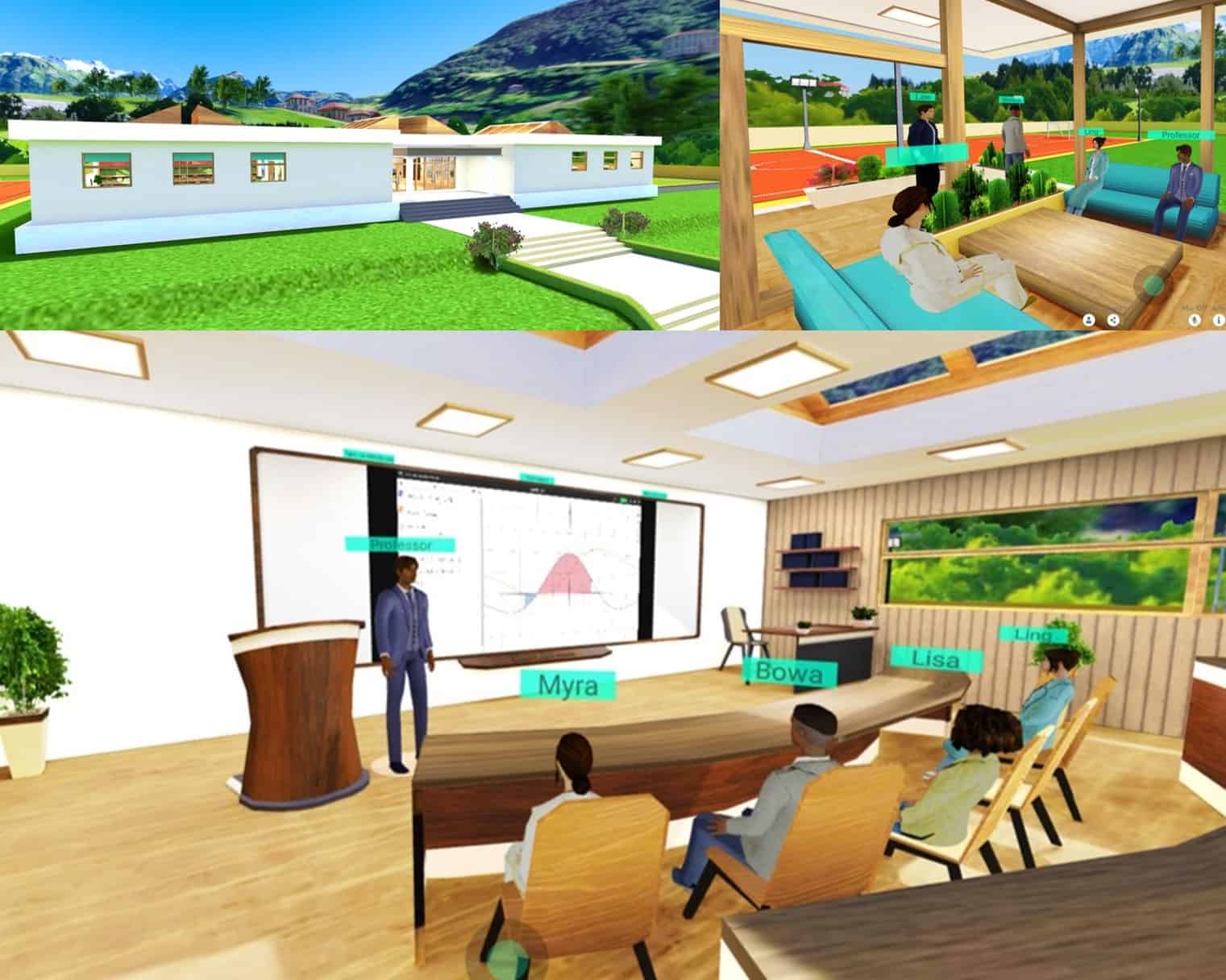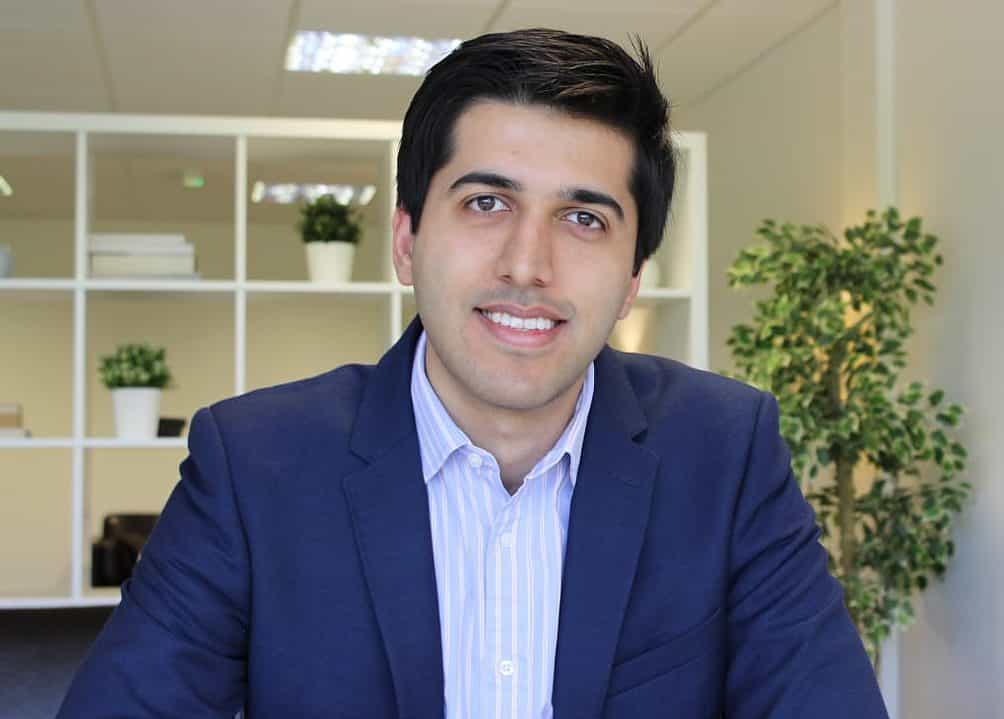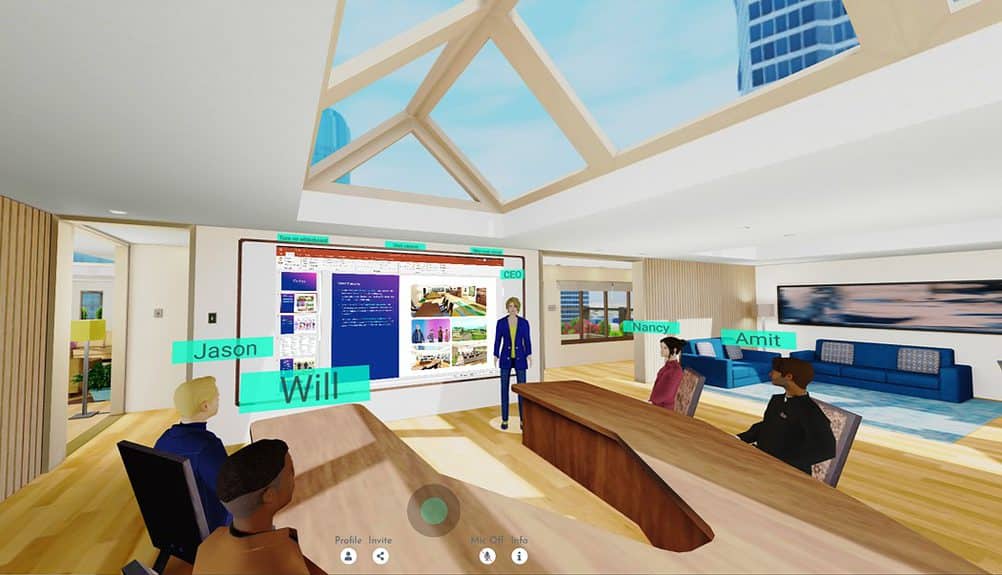
About Challeau
- Founders: Muhammad Zain Khawaja
- Founded in: 2020
- Employees: 9
- Money raised: $630,000
- Ultimate goal: Our vision is to become a global online destination where users can discover, experience and create the 3D Web.
The Covid pandemic was a catalyst for many businesses across the world to calibrate their plans and assumptions about the post pandemic world. Muhammad Zain Khawaja, Challau’s Founder and CEO, was convinced at the start of the pandemic that the world would have to adjust to a ‘new normal’ where online experiences are getting more and more important. Together with his foundational team he began building a web-based virtual 3D platform in which people can do everything they do in normal life. Haning out with friends, meeting new people, and going to school or work. And this must be as simple as possible, so that anyone with a smartphone has access.
Khawaja: “Our most important principle is accessibility and realism. We wanted a realistic virtual experience from the design of environments, avatars and activities in order to deliver immersion – it should feel like you’re visiting your friend’s home or are in a real classroom.” The result is Challau where, since the beta service went live in January 2022, nearly 36,000 virtual worlds have been created by users, and on average users are spending 20 minutes daily. In this episode of Start-up of the Day, Challau’s Founder talks about what his version of a metaverse is like.

What is Challau?
“In a world of online encounters, interactions must meet four criteria. One, interactions must be live rather than offline. Two, they must be engaging and immersive, to make them feel realistic. Three, participants must be in control. Four, they must be FUN. Through Challau, users can explore and create 3D “Web Spaces” – immersive Web experiences you can step into with others. Users can open a Web space with a standard Internet browser in which they conduct 3D group interactions with real-time speech. Challau Web Spaces are used for sharing ideas, connecting with friends, team meetings and online learning.”
How did you come up with the name?
“It is a Hindi/Urdu word which means to operate, activate, make-it-go. That’s exactly what we want our users to do.”
What is your revenue model?
“We are still pre-revenue, as we are in beta mode. Once we cut over to commercial service, we plan to monetise premium content, for example one-time micro purchases of avatar models or environments. For example, you could buy a stylish outfit for your avatar, or a nicer, more elaborate template for your office or living room. We also envisage paid subscriptions for access to premium features including extra customisation options and admin controls.”

What’s the technology behind Challau?
“Challau is an entirely web-based platform, meaning that the entire experience runs on any web-enabled device using a standard web browser like Google Chrome. The key innovations of Challau are around making 3D web experiences run really efficiently across devices, especially smartphones. From a user experience perspective, you can create a 3D world in as little as 8 clicks and 30s and share your world with others by simply copy-pasting its unique URL.
We wanted Challau to be accessible to everyone who has a smartphone. 80 percent of our 38,000 users are from India, Nigeria, Philippines, Pakistan and Bangladesh. There are billions of people in emerging markets that exclusively access the Internet via smartphones, and most of them have no access to VR headsets or powerful gaming computers. That’s why we have a huge advantage when it comes to the 3D web space in comparison to VR-centric metaverse platforms which require users to purchase a Virtual Reality headset.
To deliver and support a highly realistic and immersive 3D experience on a limited device like a smartphone throws up major optimisation challenges. Challau is unique in that our highly realistic environments and avatars take up somewhere around 20MB compared to 200MB+ for comparable apps.”
What is your biggest challenge?
“To deliver a realistic experience in a web browser on a smartphone requiring no more than a hundred megabytes. At the granular level, we achieve high realism with an extremely low number of polygons. A polygon is a face of a 3D object and the more faces or polygons you have, the more realistic it looks, but more polygons also means more memory and processor requirements. That’s why most mobile Web experiences for 3D are cartoony blocky designs rather than very realistic ones. Our avatars are both realistic AND you need very few megabytes – they are six times more efficient than the industry standard.”
Also, for many of Challau’s users, the 3D Web is a brand new experience. A key challenge for us is therefore to help users understand what 3D Web Spaces are and how they work. From our perspective, that means simplifying the User Experience and controls as much as possible so that navigating and interacting in a 3D Web Space is highly intuitive and easy.”
Where is Challeau now and where will it be in five years?
“Our vision is to become a global online destination where users can discover, experience and create the 3D Web. Metaverse as a term is something we avoid in describing our platform as it has become more of a hyped-up buzzword rather than a well understood service concept. We believe that the web is undergoing a transformation, and the future of the web will be an immersive one, where instead of browsing 2D websites and holding meetings in 2D tiles, users can step inside a web experience and have live, shared interactions. Our vision is to become a platform that supports over a billion 3D Web Spaces in five years’ time.”


